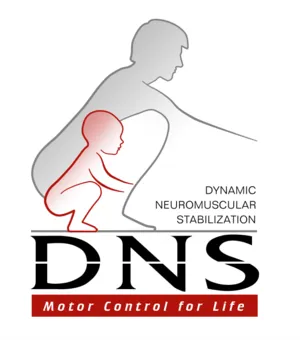
DNS, stands for, Dynamic Neuromuscular Stabilization, which is a new method of intrinsic locomotion system of stabilization. In this approach we activate the integrated stabilization system to achieve exciting levels of improved function. The integrated stabilization system of the spine is comprised of the small inter-segmental spinal muscles, the deep neck flexors, the diaphragm, the abdominal wall and the pelvic floor.
Ideally these muscles automatically activate prior to movement establishing a stable base. Each movement starts with stabilization of body segments providing balance, efficiency and security to the participating elements. Activation of the stabilization system during any movement should be automatic or "subconscious". If one muscle or even part of it is dysfunctional, the whole stabilization function is disrupted and the quality of the purposeful movement is compromised. The body then uses a compensatory mechanism to provide at least some degree of body segmental stability. These compensatory measures typically involve superficial muscle groups that cause an overload on spinal joints and discs, muscle overuse, and repetitive strain on the muscles. This leads to even more imbalance of the locomotion system and decreased spinal stability.
With DNS we can analyze the quality of functional stability and assist in finding a "key link" of the dysfunction. The diagnosis is based on a comparison of the patient's stabilizing patterns with the development of proper stabilization patterns of a healthy baby.
The treatment goal is to establish ideal patterns of movement as defined by the developmental kinesiology; mainly normal movement in the first year of life.
Specific functional exercises improve spinal stability by targeting the integrated stabilizing system. The brain must be properly stimulated and conditioned to automatically activate stabilization patterns necessary to initiate movement.
The ultimate strategy is to teach the brain to maintain central control and stability of the movement restored during the therapy. This is achieved by stimulation of the stabilizers when placing the patient in the primal developmental positions. During stimulation the joints become centralized, the spine extends and the intra-abdominal pressure is increased. Eventually, through repetitions of the exercises, central control is established as an automatic model that becomes a fundamental part of everyday movement. Contact our Chandler chiropractor today to learn more!
